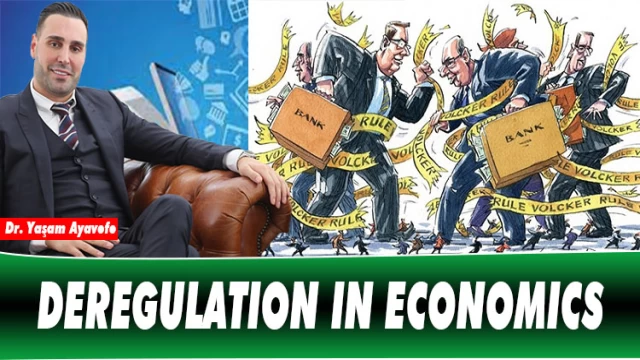The first aspect of fiscal deregulation concerns the liberalization of the balance of payments, as recommended by the International Monetary Fund (IMF). It made it possible to increase financial exchanges.
The government then decided whether to allow international capital flows, or to what ceiling to limit them.
The second aspect of deregulation has to do with liberalization of the financial sector itself, which is something I've been working on more.

Two questions arise about the problem:
- Should a banking system be kept surrounded by rules and public oversight?
- On the contrary, should he be allowed to make a certain number of decisions on his own?
By the early 1980s, the economy was largely regulated. Banks did not choose at what rate and how much to lend. Deregulation has removed all these blockages.
The 1984 Banking Law and the 1986 Financial Deregulation Law constitute the legal framework of this financial transformation.
Before financial deregulation, there were about 200 subsidized loans. Whenever there was a new big treasury concern, a new subsidized loan emerged.
For example, if we wanted to modernize the industrial equipment, a subsidized loan would be allocated for this modernization at a rate determined by the treasury. The same would be done to save jobs or restructure the workforce.
The system was so complex that it was difficult for the treasury to get an idea of the budgetary cost of these measures, which sometimes followed opposite logic.
Credit check should have been added to this. When treasure felt that there was too much money in circulation, he asked the banks to reduce their loans.
To make it simple, before deregulation, a banker's job was to lend a relatively narrow envelope within a given rate menu.

Half of the banking system was nationalized at that time. The other half was under the control of the central bank and the treasury. The banking universe was not a commercial universe that impeded financial innovation.
When a company is owned by an institutional investor as opposed to an individual investor, it tends to take more operational risk.
Stagflation has exacerbated the problem. Public officials wanted to intervene to stimulate investment while preventing inflation from rising. It was like hitting the brake and the gas at the same time.
Before the banking law, each bank had privileges to distribute savings products and provide subsidized loans.
The banking law cleared everything up by defining four main categories of banks: regular banks, mutual banks, investment banks, and savings banks.
It empowered regular banks to practice the professions of investment banks, which were quite legitimate. If they're collecting the money, why shouldn't they have the right to invest freely?
Banking law abolished certain monopolies, providing a simplified framework for defining new laws.
It should be noted that the other two measures that are important are the removal of credit controls and the removal of most subsidized loans.
These changes revolutionized the way bankers thought, as they became responsible for lending policies.
What conclusions can we draw from this deregulation? Did it serve the real economy, that is, the non-financial economic sector?
Concretely, we see that making the financial sector more competitive has the effect of making the non-financial sector more competitive.
After deregulation, underperforming firms no longer receive subsidized loans, and potentially better entrants have access to finance for growth.
As soon as the industry is deregulated, banks accelerate the creative destruction movement by redeploying the capital of declining companies to younger companies.
Added to this is the fact that the financial sector has become intermediary, that is, entering the financial markets without going through a bank.
Disintermediation has made it possible to reduce the financing costs of companies. It became easier for individuals to buy stocks and bonds, and for companies to issue them at a lower cost.
All this, combined with the deregulation of international capital flows, has allowed it to experience a significant influx of investors.
What were the results of these turmoil in companies?
Fiscal deregulation and disintermediation changed the identity of shareholders. Shareholders have traditionally been small savers. They were quickly replaced by Anglo-Saxon pension funds.
When a company is owned by an institutional investor as opposed to an individual investor, it tends to take more operational risk.
The holdings therefore refocused on their core business. This made them more competitive. It allowed shareholders to diversify their portfolios.
However, it has increased the risks, especially for employees who can no longer diversify and bear the burden of work.
Dr.Yaşam Ayavefe




























Yorum Yazın